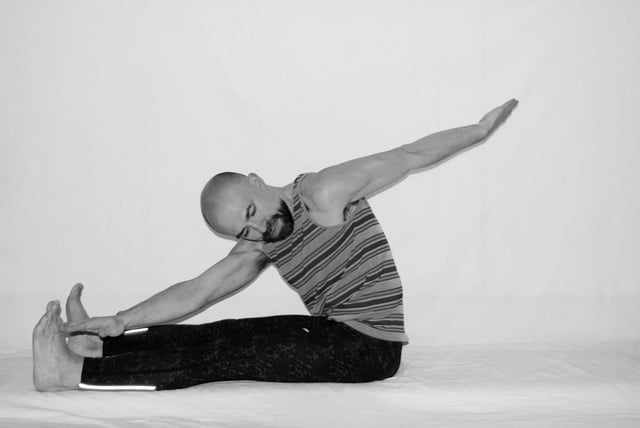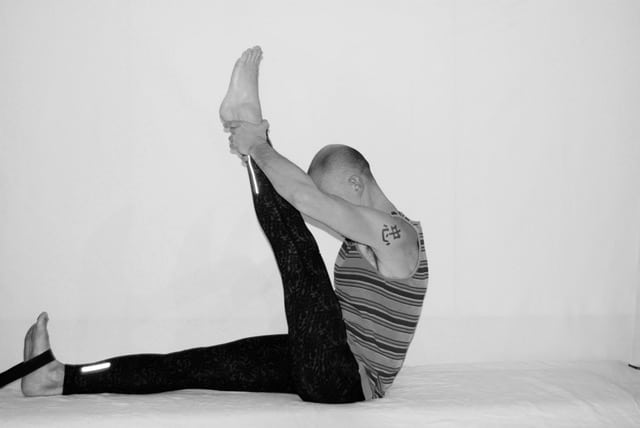How to Choose Your Pilates Instructor

by Patrick Lui
You’d never purchase a car without doing your homework first. Even after deciding which type will best serve your needs and what your budget is, you still need to research the latest models, go on some test drives and kick a few tires before making your final decision.
Well, it’s no different when it comes to looking for the right Pilates instructor. Besides ensuring your safety and preventing possible injury, a competent teacher will help develop good movement habits and maximize your progress as well as provide inspiration when your own motivation starts to wane.
In addition to being prepared with questions, and listening carefully to the answers, it’s also important to learn as much as you can about the person who will be instructing you. Ideally, someone who sees Pilates as more than just another exercise program and can help you to see it that way too!
Here are 8 questions you should consider before choosing an instructor:
1. What are your goals (and theirs)?
People come to Pilates for a variety of reasons, from healing back pain or rehabbing an injury, to improving sports performance and losing weight. Incredibly enough, Pilates can help with all of these things and the more specific your goals, the more satisfied you’ll be with the results!
When exploring a website, it’s important to read the instructor’s bio and learn their personal story. Many instructors come to Pilates to heal themselves from an injury and become passionate about healing others. Others are athletes or dancers who understand the cross-training benefits of Pilates for their given sports. And yet other instructors are fuelled by an enthusiasm for living life to the fullest. Understanding an instructor’s background and motivations for teaching can help you find a kindred spirit whose journey may even resemble your own.
2. Where did the instructor train and for how many hours?
In my opinion, a solid training program consists of nothing less than 650 hours. Well-trained teachers invest their time attending lectures, practice teaching volunteer bodies, taking lessons, doing personal workouts, observing certified teachers in action, studying anatomy and being examined along the way. These programs usually take a year or more and stoke the lifelong learning teachers continue to seek the rest of their careers. This intensive commitment ensures teachers are already experienced when they start working for a studio. You can’t be a good instructor without being an experienced one so make sure you find someone who’s put the time in!

3. Are they PMA certified?
The Pilates Method Alliance is a not-for-profit association that grew out of a need to regulate the rapidly growing Pilates industry. They administer a standardized test for Pilates teachers from all lineages. PMA certification assures you the instructor has taken a minimum 450-hour training course, is seeking yearly continuing education and is legally qualified for liability insurance.
4. Does your instructor still practice Pilates regularly?
A good teacher needs to continue as a good student. When done well and consistently, Pilates leaves you feeling fantastic. Good teachers take lessons as often as possible, and gladly invest hard-earned time and money to keep learning. Personal workouts provide a chance to explore the Pilates work more deeply and to discover what comes from the “patience and persistence” Joseph Pilates encouraged. A true advocate for Pilates walks their talk because Pilates feels too good not to.
5. Do they teach Classical or Contemporary Pilates?
During your research, you might see Pilates differentiated by the phrases “Contemporary” or “Classical.” These two camps (sometimes hotly divided) use Pilates differently to achieve different goals. Classical teachers tend to stay very close to the teachings of Joseph Pilates, following a specific exercise order, taught at a certain rhythm and tempo, using transitions and equipment Joseph Pilates designed to achieve the full-bodied effect he intended.
Contemporary Pilates incorporates everything that came after Joseph Pilates died. Especially during the 90s, fitness was heavily influenced with concepts from the world of physiotherapy, like core strength and neutral pelvis. Contemporary Pilates is more likely to adapt the Pilates exercises, varying the order, using equipment with different specs and incorporating exercises from other disciplines to create a hybrid of sorts.
I’ve had the pleasure of knowing many good teachers, both Contemporary and Classical, so keep in mind that no one style guarantees a competent teacher. What is more important is whether the teacher is consistent in their curiosity about what they teach. Regardless of whether they see themselves as more Classical or Contemporary, a good teacher’s ultimate allegiance is to learning — that means being open to questioning and evaluating themselves in relation to their student’s needs and progress. If a teacher tells you theirs is the only way, run the other way!

6. What options are available when starting with the instructor?
The best way to begin your Pilates journey is with a series of one-on-one pilates lessons. You’ll gain the undivided attention of your instructor who can tailor the workout to your personal needs as well as spot and correct any unhealthy movement patterns. You’ll learn at your own pace, in a way that is specific to your body, and gain the most return from the time you’ve invested. As few as 3-5 private lessons should have you well on your way to the greater health benefits Pilates promises. Once you feel more confident and know what you’re doing, you should be able to have the option whether to continue with private sessions or transition to the camaraderie of duet or group classes.
7. Do they only offer mat classes?
Joseph Pilates developed the mat series first and foremost, so it stands by itself in some respects. He built the equipment after the fact, filling in possible holes and using it to both facilitate and inform the mat work. Because mat work comprises a fraction of the classical system, the combination of mat and equipment work is intrinsic to the overall success of Pilates. It’s far more challenging (and perhaps even impossible) to achieve Pilates’ full effects without using the equipment. In the very least, it will take much longer to reach the uniform development Joseph Pilates desired. Besides, the equipment work is fun and feels great to do!
8. What equipment does the instructor use?
Reputable studios and teachers only use professional equipment which has been designed and built to exacting specifications. Some brand names to listen for include Balanced Body, Gratz, Pilates Designs and Peak.

Conclusion
Pilates should leave you feeling taller, stronger, calmer — able to breathe more deeply and move more freely — so be sure to stay open and true to your own experience.
I’ve studied with a variety of teachers but the ones I stuck with were attentive to my individual needs. I felt better in my body and about myself immediately after my sessions with them. Sometimes I left exhilarated and other times calm, yet always so good in my body I knew I would do Pilates the rest of my life. Ultimately, the way you feel after your workout will tell you whether the teacher is for you.
